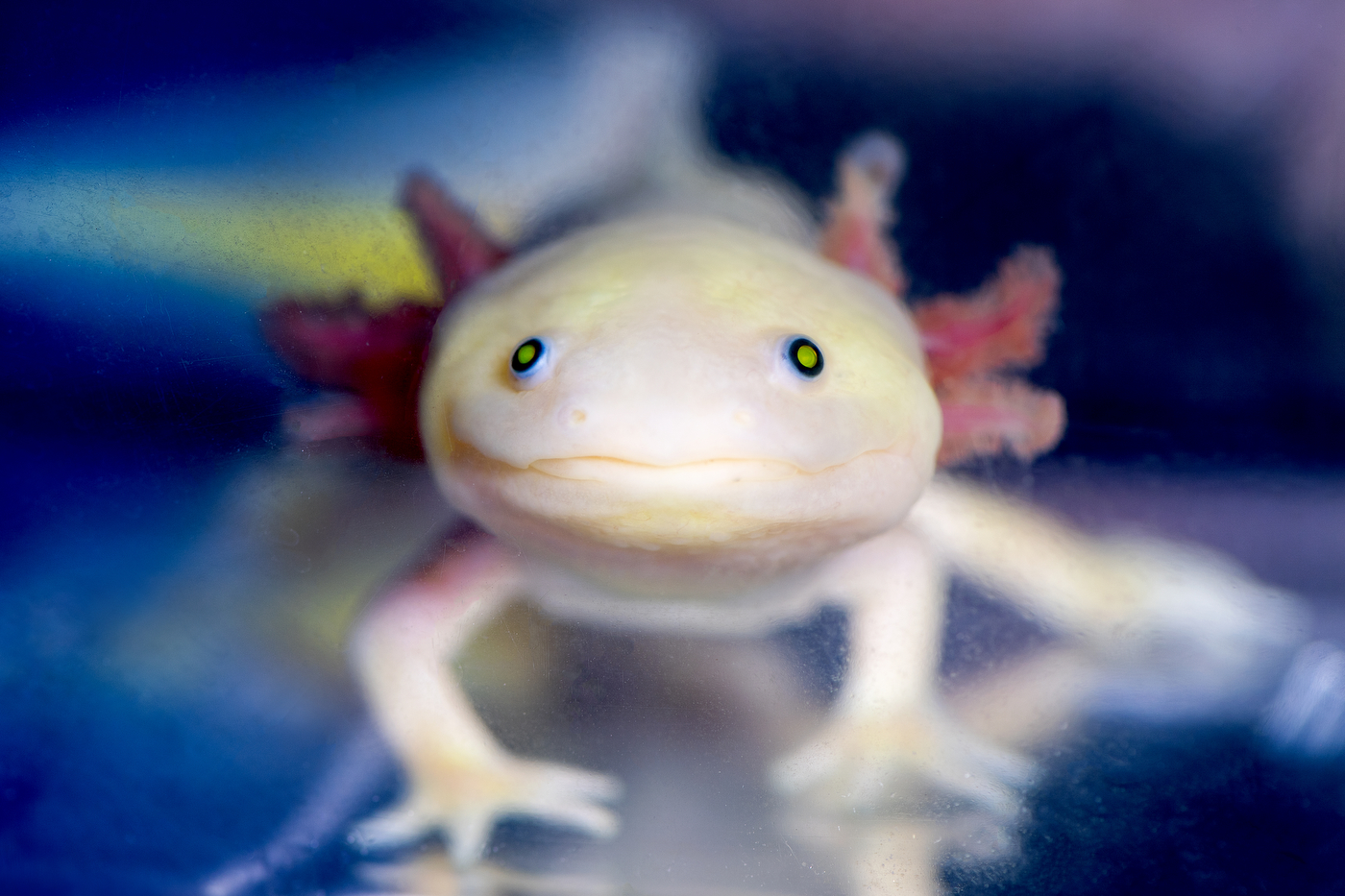If you stuck the head of a toad on the body of a chubby eel, and added legs, a frilly mane, and the superpowers of Marvel’s Deadpool, you might have something like an axolotl.
This unusual-looking salamander from Mexico can regrow injured or lost body parts flawlessly, and without scarring. James Monaghan, an associate professor of biology at Northeastern, is trying to learn how axolotls do it, in the hope that we can someday trigger a similar process in humans.
“They turn back on genes that you and I turn off forever,” says Monaghan, who has about 400 axolotls in his lab at Northeastern. “We have all the genes to make a limb, we just don’t know how to coordinate them. They do.”

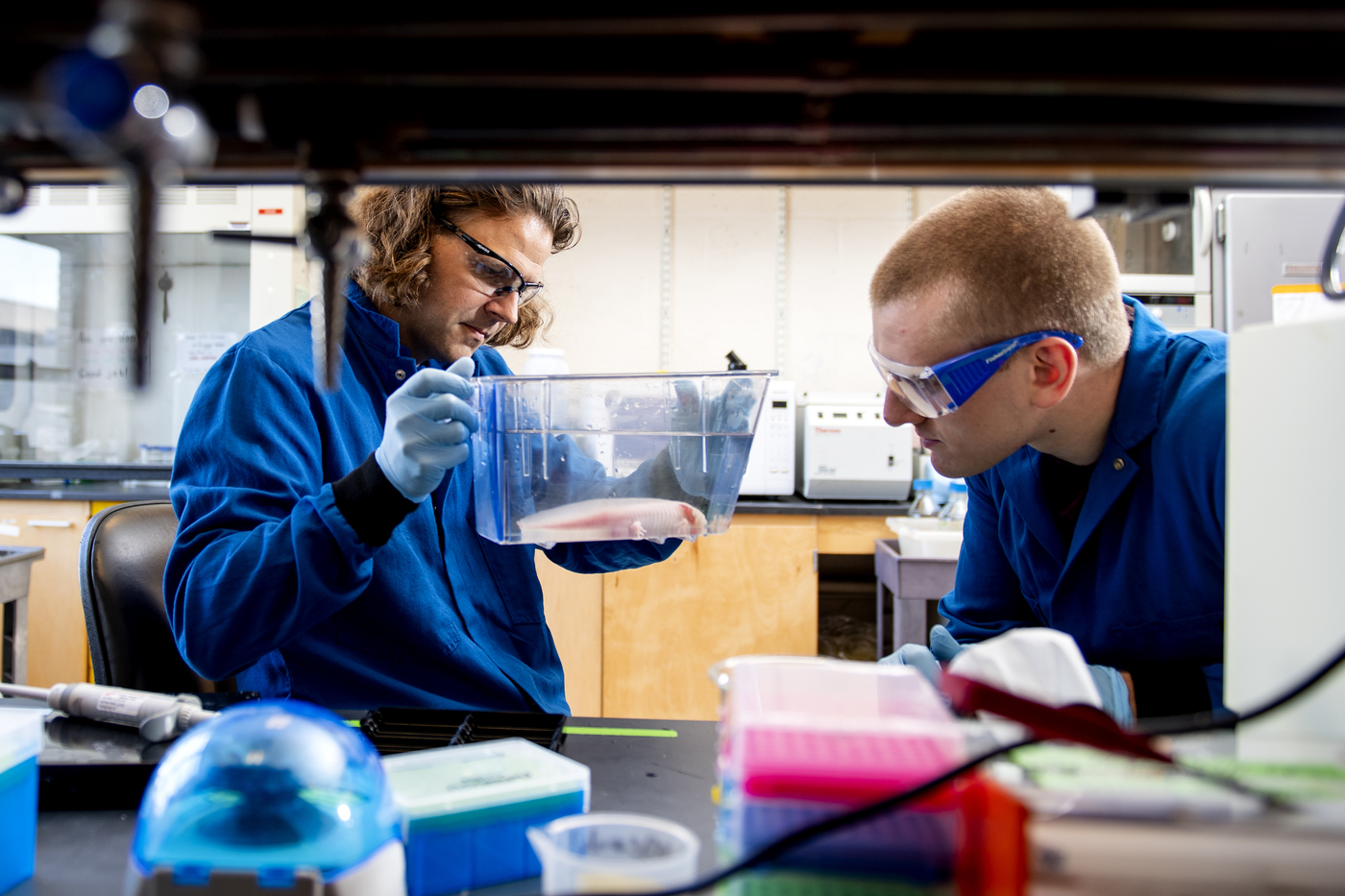
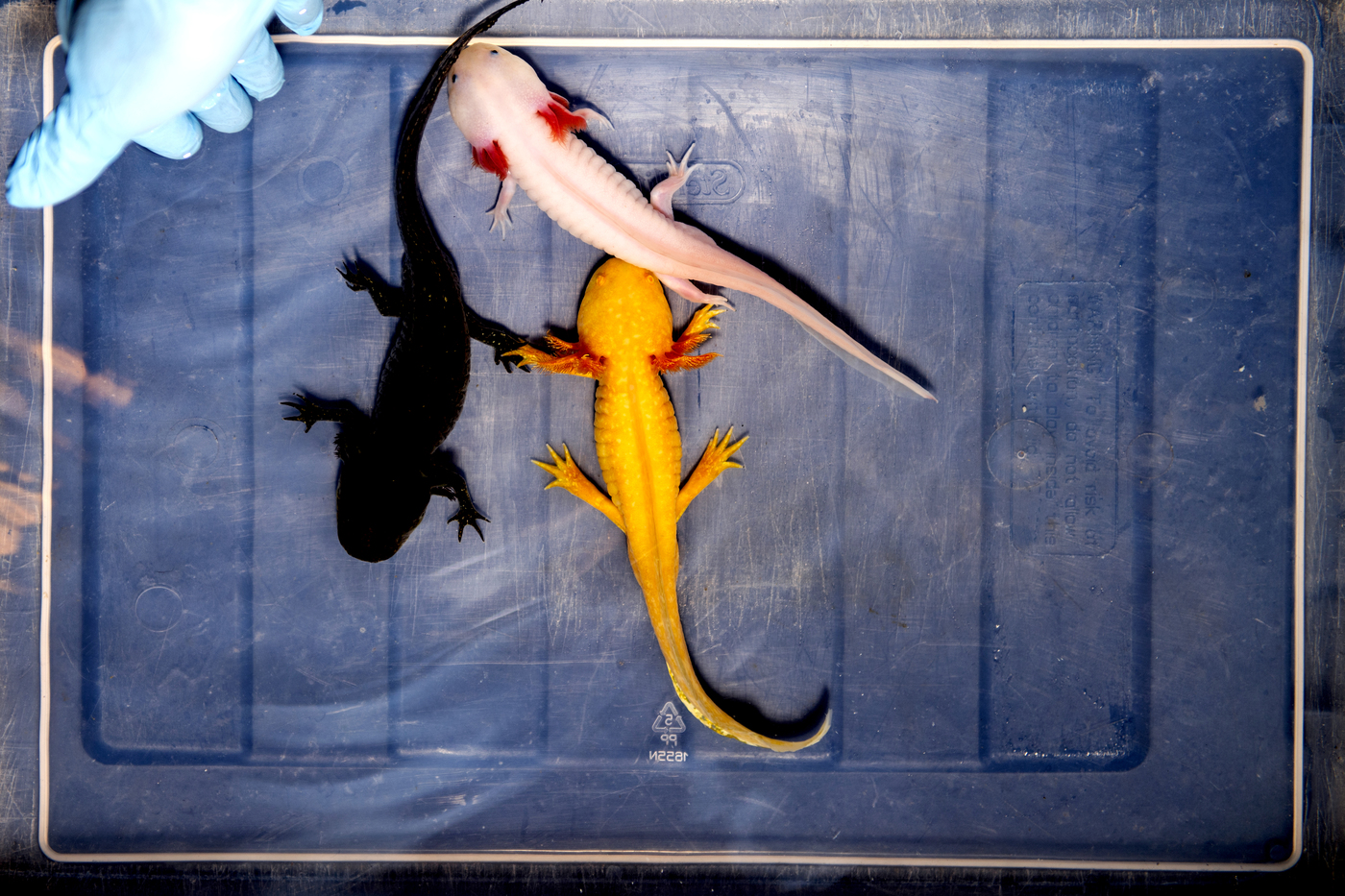
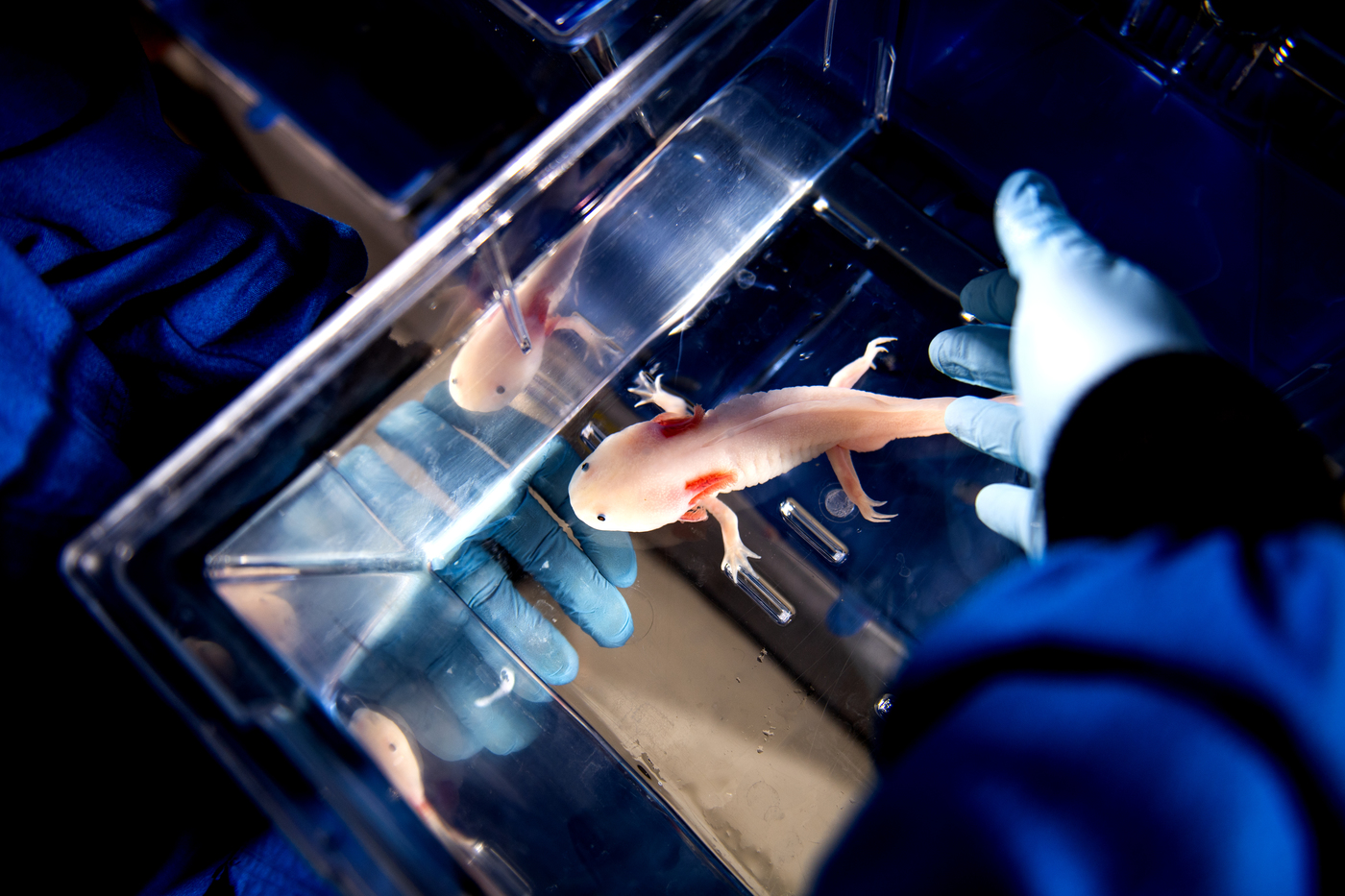
As a human fetus develops, cells divide and differentiate into specific types to form nerves, tissues, bones, and organs. But for the most part, these processes cease once we’re fully grown. Our bodies won’t grow us another arm if we lose one.
Axolotls and other salamanders are able to turn back on these developmental processes when they get injured. The cells near the wound de-differentiate, reverting to types of cells that are closer to stem cells and capable of building new tissue. As this process is underway, hundreds of genes turn on and off in different cells. To be able to translate this to humans, researchers need to identify exactly which genes trigger the changes.

In the lab, axolotls are often bred with less pigment in their bodies to make them easier to study. In the wild, they are typically a dark, muddy brown. Video by Brilee Weaver/Northeastern University
But the axolotl genome is more than 10 times the size of the human genome, which has made it particularly hard to analyze. It was finally sequenced last year, creating opportunities for new avenues of research.
“Ten years ago, I would have said it’s out of the question to even think about regenerating a person’s arm,” Monaghan says. “But the more we learn, the more feasible it seems.”
This week, salamander experts from around the world are gathering at Northeastern to share knowledge and techniques that could bring us closer to imbuing humans with our own regenerative abilities. The conference, which runs from Tuesday, July 23, to Thursday, July 25, will feature talks on the mechanisms behind regrowing teeth, tails, eyes, and gills, but it’s not just for scientists studying regeneration, Monaghan says.
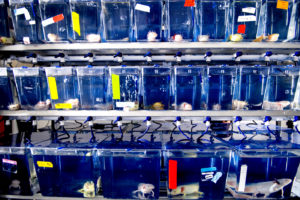
Axolotls breed easily in captivity, but are nearly extinct in the wild. Photo by Matthew Modoono/Northeastern University
Although axolotls breed easily in the lab, their numbers have plummeted in the wild. They are found exclusively in Lake Xochimilco, the remnants of a large lake system that has been reduced to a series of canals in the southern part of Mexico City. Other species of salamanders are also losing their habitat, struggling to cope with invasive predators, and dying from a particularly nasty fungal infection.
Losing these populations means losing genetic diversity that could help researchers understand the incredible abilities of these animals. Monaghan says attendees will include researchers studying the ecology and conservation of salamanders, as well as their regenerative abilities.
“If you work on salamanders, we want you there,” Monaghan says.
This story was originally published on News@Northeastern on July 22, 2019.
